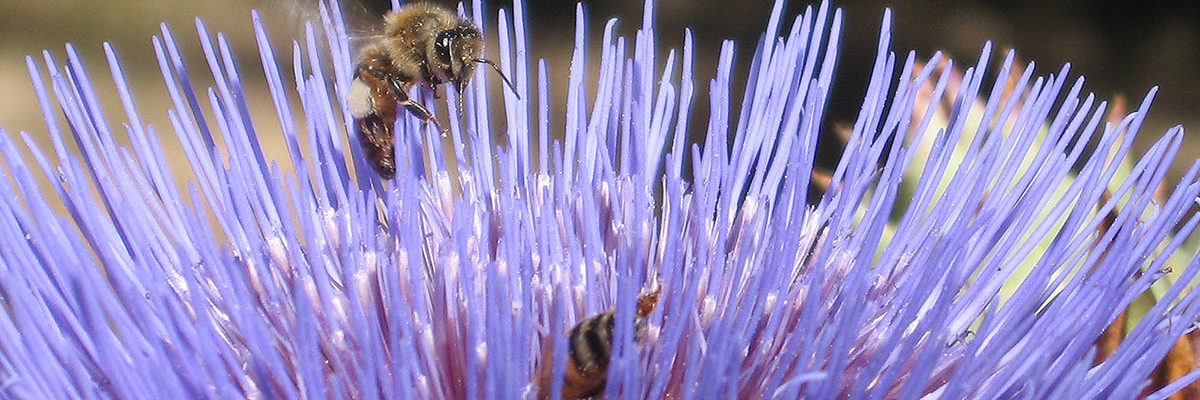Defining a Mandible
If we think of a mandible in terms of ourselves, we find it defined as: the jaw or a jawbone, especially the lower jawbone in mammals and fishes. We are able to move our jaw up and down to sing, chew gum, and yawn. Yet, we also can move our jaw sideways as well as forward and backward. The mandible’s design—shape and articulation—allows for many movements. Yet, the design differs among the mammals and among the fishes. Amazingly, it “accommodates” our various needs. Similarly, there’s a world of difference among mandibles when it comes to the arthropods, where the mandible is described generally as: either half of the crushing organ.
Comparing Two Aquatic Insects
For many arthropods, the mandible helps determine what constitutes—and does not constitute—food. For example, we can compare the mandibles of the immature stages of the false cranefly Ptychoptera townesi and the mayflies Paraleptophlebia gregalis and P. temporalis, all of which live in freshwater until they emerge as adults. I worked with these insects some years ago while sorting out their role in stream systems in Oregon. Tangential to my research, I had access to a scanning electron microscope. One fine morning, I popped them into the vacuum chamber. Among the images I took are the head of the false cranefly, Ptychoptera townesi and the head of the mayfly, Paraleptophlebia sp.:
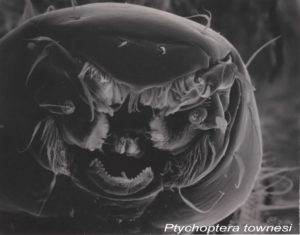
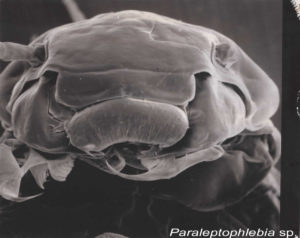
And the mandibles of each:
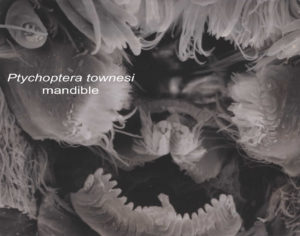
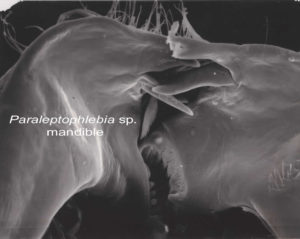
It might come as no surprise to learn that the false cranefly is capable of feeding only on very tiny particles, the kind that result from the breakdown of leaves that fall from overhanging branches this time of year. The mayfly, however, is able to survive well on both small particles and whole leaves. The mayfly can gather up the particles as well as shred the leaf litter—with a little help from the mandibles.
Looking at the Honey Bee Mandible
Still, there’s more to a mandible than meets the eye.
For example, the honey bee mandible, too, is a tiny affair—and also curiously shaped. Curious as well are the differences in shape among the mandibles of each the worker, the queen, and the drone.
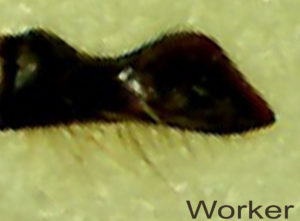
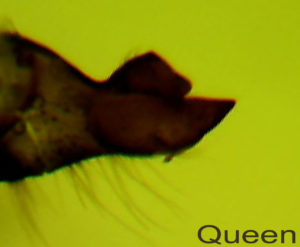
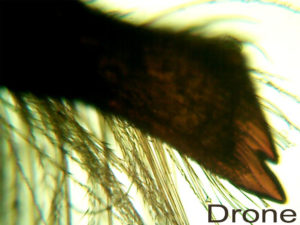
There are reasons for this, no doubt. The worker’s mandible fashions honeycomb, bites the likes of skunks and bears, and serves as a spoon for feeding the colony’s young. The queen’s mandibles are noteworthy for many because of their attached mandibular glands. And although we know the drone has small mandibular glands, similar to much else about him, we know little about their capacity.
The bees also use their mandibles to steady the proboscis in use, feed on bee bread, and in grooming. Further, every bee we see has been able to exit the honeycomb cell in which it was laid as an egg. The bee spins inside the cell and uses the mandibles to poke overhead until the wax that has contained it as pupa gives way to open air. It’s an essential move, though at a glance the queen and drone would seem to have an easier time of this than the worker.
Thus, reference to the mandible as the crushing organ clearly oversimplifies its role in the life of an arthropod. Although we know that making it possible to feed on certain things is one possible role of the mandible, we might be sure that there are numerous roles yet to be defined in the intriguing diversity of arthropods on the planet. So many things for a mandible to do!

